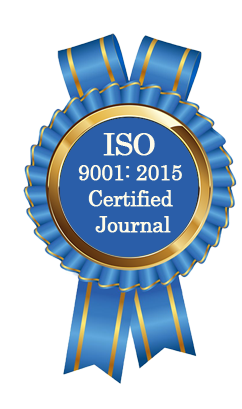| All | Since 2020 | |
| Citation | 105 | 60 |
| h-index | 4 | 4 |
| i10-index | 3 | 2 |
WJAHR Citation 
Login
News & Updation
Best Article Awards
World Journal of Advance Healthcare Research (WJAHR) is giving Best Article Award in every Issue for Best Article and Issue Certificate of Appreciation to the Authors to promote research activity of scholar.
Best Article of current issue
Download Article : Click here
Indexing
Abstract
ANTIBIOTIC SUSCEPTIBILITY/RESISTANCE PROFILE OF BACTERIA FROM FARM WASTES: FINDINGS IN EXCRETA FROM FOUR POULTRIES OF WEST CAMEROON
Josué Simo Louokdom, Pierre René Fotsing Kwetché*, Anselme Michel Yawat Djogang, Sandrine Gamwo Dongmo, William Lelorel Nankam Nguekap, Serge Honoré Tchoukoua, Jonas Kouamouo, Omer Njajou Tchikamgoua, Jules Roger Kui
ABSTRACT
The present investigation was undertaken to address the trend of bacterial resistance to antibacterial agents in poultry and related consequences. Precisely, it was initiated to gather necessary information on bacterial communities in farms, the types of antimicrobial agents used and the susceptibility/resistance profile of bacteria to common antibiotics. Chicken excreta collected from four farms in Bafoussam and Bandjoun (two neighborhoods in the West Region of Cameroon) underwent microbiological analysis and susceptibility testing according to standard protocols by the CAS-SFM (2017). The overall picture from data analysis indicated that most common bacteria isolates belonged to three major groups: Enterobacteriaeae, Bacillus and Staphylococcus, members of which are potent etiologies of zoonotic infections and powerful engines for resistance traits selection and dissemination. Resistance to antibiotics like Oxacillin, Tetracycline, Co-trimoxazole and Ceftriaxone were common and invariably high, regardless of the bacteria group targeted. In further details, resistance rates were higher than 60% for 34% and 25% of the antibiotics used in Gram-negative rods from Bafoussam 1 and Bafoussam 2, respectively. In Bandjoun 1, resistance rates higher than 60% were obtained in 34%, 32% and 46% of the antibiotics used for Gram-negative rods, Gram-positive rods and Gram-positive cocci, respectively. The respective rates were 48%, 41% and 60% in Bandjoun 2. Overall, antimicrobial agents frequently used were more affected by resistance while the farmers recognized the threat resistance might pose in their activity. Though yet to be addressed, both the isolation and resistance rates could help anticipate that the economic burden of farm-related infections might by very high. Biological alternatives to antimicrobials for growth promotion and fighting against pathogens in farms was, therefore, thought to be primordial, feasible, then strongly advocated.
[Full Text Article] [Download Certificate]
